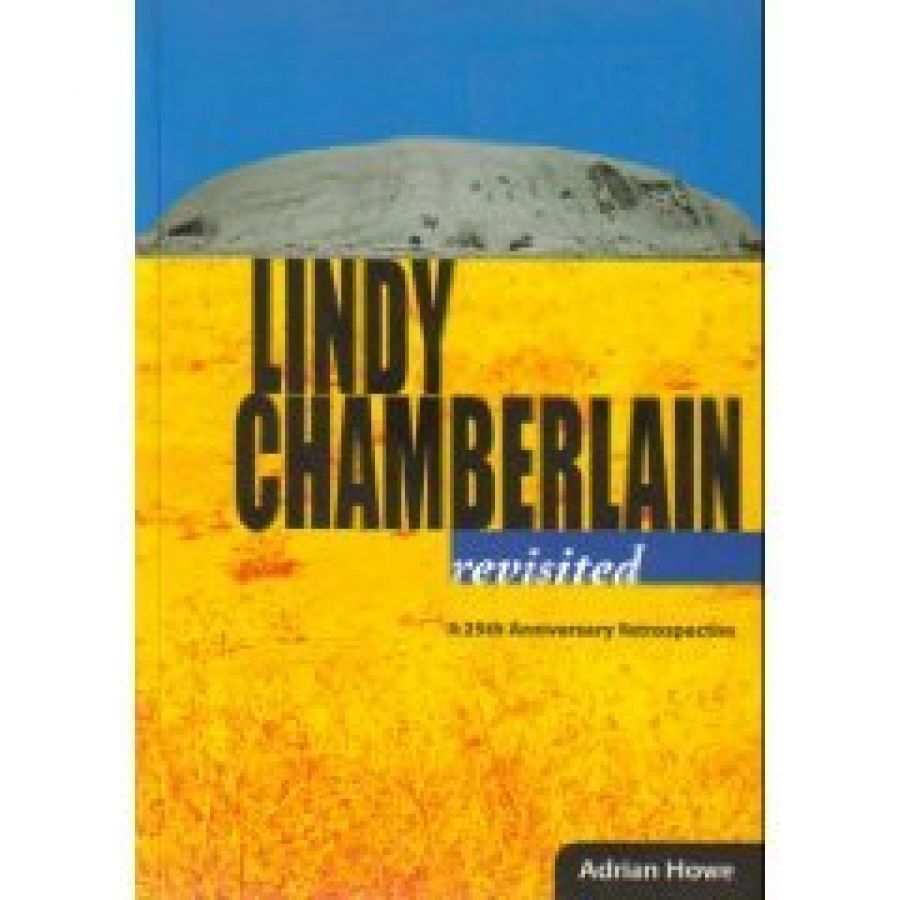
- Free Article: No
- Contents Category: Biography
- Review Article: Yes
- Article Title: Scapegoat in the desert
- Online Only: No
- Custom Highlight Text:
It took twenty-five years for the first comprehensive feminist appraisal of the Chamberlain case to be published. This speaks volumes about the thrall in which Australia was held by the Chamberlain story. Adrian Howe writes: ‘It is as if the saga so overwhelmed the national psyche that it defied feminists, left-wing activists and most trained thinkers of any ilk to make sense of it.’ She does not exclude herself from this judgment. In fact, she describes her return to Lindy Chamberlain’s story and her collation of the other feminist critiques of the case as an act of expiation, making belated amends for having succumbed to the dominant media line and thus become complicit in the resulting miscarriage of justice.
- Book 1 Title: Lindy Chamberlain Revisited
- Book 1 Subtitle: A 25th Anniversary Retrospective
- Book 1 Biblio: LHR Press, $45 pb, 318 pp
- Book 1 Cover Small (400 x 600):

Nevertheless, the fact that Lindy Chamberlain received more than 20,000 letters of support, mostly from women, is a significant revelation. It contradicts the myth that women were her chief detractors. At the same time, the correspondence confronts us with the existence of groups within our society whose voices carry little weight. This throws into sharp relief what is disregarded by the mainstream and, by implication, what is revered.
Picking up on a statement by Lindy Chamberlain describing herself as ‘the victim of a medieval witch-hunt’, Dianne Johnson’s exploration of traits ascribed to witches revealed how attacks upon Lindy Chamberlain followed a well-worn path. Her ‘From Fairy to Witch: Imagery and Myth in the Azaria Case’ (1984) marked the first feminist response to the Chamberlain trial. Much of the subsequent feminist treatment of the Chamberlain trial, including Catherine Rogers’ photographic exhibition, also focused on black spots in our system of cultural beliefs.
Kerryn Goldsworthy’s ‘A Martyr to Her Sex’ (1986) highlights the societal expectation that motherhood and sensuality remain discrete. Lindy Chamberlain paid the price for dwelling unashamedly in both realms. In ‘Prisoner of Discourse: The Dingo, the Dog and the Baby’ (1989), Julie Marcus distils the controversy to a contest between the ‘bad woman’ and the ‘wild dog’. In this reading, Chamberlain’s ‘crime’ is to falsely accuse the dingo. The dingo, symbolically male, iconically Australian and at home in the outback, was preferred to a woman who ventured beyond her domestic station and took her baby to the dead heart of an untamed continent. Howe’s own contributions are an indictment of the media coverage of the Chamberlain trial and of the laws of evidence under which it was conducted.
In scrutinising the psychological dimensions of the Chamberlain phenomenon, the criticism goes a long way to explaining the intensity of feeling inspired by the case and why critical response was paralysed. The reaction to the Chamberlains revealed Australian society to be riddled with psychological blindness, a condition that likewise afflicted the fourth estate and the judiciary. The ability to see and judge clearly was lost as prevailing assumptions masqueraded as fact, effectively displacing alternative thought. Given such conditions, witch-hunting begins.
The term ‘witch-hunt’ has acquired connotations beyond its original confines, due in no small part to the legacy of Arthur Miller’s The Crucible (1952). Underlying both the restrictive and broader applications of the term is a recognition of the psychological tendency for groups and individuals to scapegoat. We seek scapegoats amongst those whose behaviour and beliefs draw attention to suppressed contradictions in our own make-up. If this occurs on a sufficiently large scale, a pack mentality forms and persecution of non-conforming behaviour and opinion is never far away. Revisiting the Chamberlain case, we are shown some of the frailties in the Australian psyche. In this ‘age of terror’, it is a timely reminder.


Comments powered by CComment